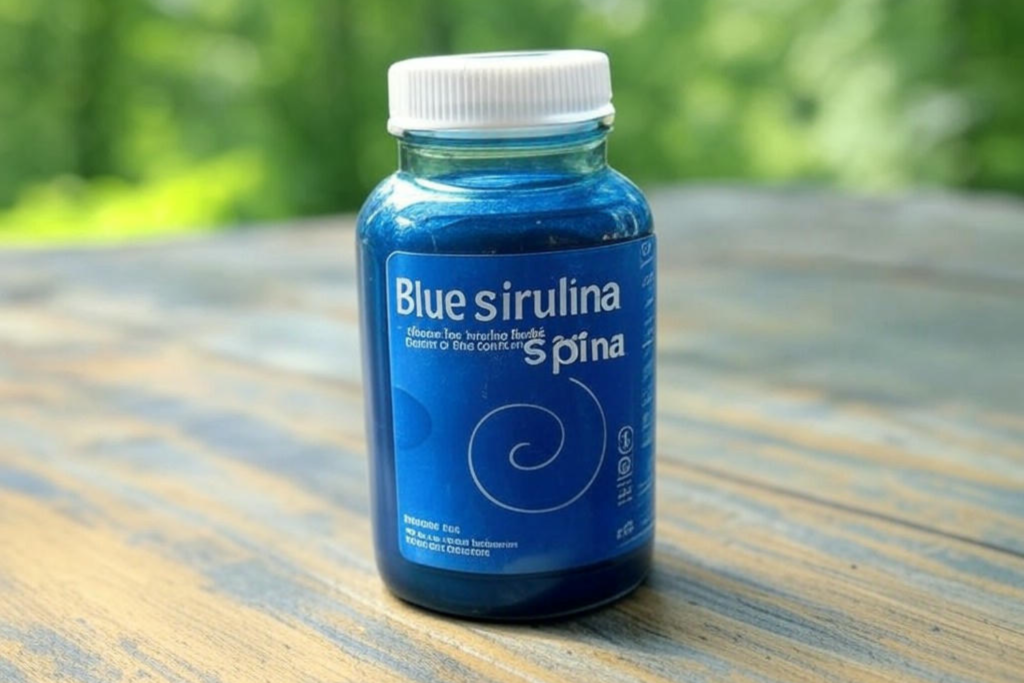Unlock the health secrets with blue spirulina, a superfood packed with nutrients.
Experience the benefits of blue spirulina for a natural boost in energy and wellness.
Blue spirulina, often celebrated for its vibrant color and health benefits, has become a staple in the diets of health enthusiasts around the globe. This blue-green algae, known scientifically as Arthrospira platensis, contains a unique pigment called phycocyanin, which gives it its distinctive hue and is responsible for many of its health benefits.
In recent times, the quest for natural, health-conscious alternatives to synthetic food colorings and additives has led to the discovery of blue spirulina. This vivid blue extract comes from a species of blue-green algae, distinguishing itself with both its color and health benefits.
Blue spirulina is celebrated for its high concentration of phycocyanin, the antioxidant pigment responsible for its brilliant blue color. This compound not only gives blue spirulina its unique visual appeal but also endows it with several health advantages. It’s known for its anti-inflammatory properties, its role in boosting immune function, and its potential in safeguarding against various chronic conditions. As interest in natural superfoods grows, blue spirulina stands out as a promising ingredient in both the culinary and wellness sectors.
What Is Blue Spirulina?
Blue spirulina, derived from the algae Arthrospira platensis, is not actually blue in its natural state but gets its vibrant color from phycocyanin, a pigment extracted during processing. Spirulina is a type of blue-green algae, but more accurately, it’s a form of bacteria known as cyanobacteria. These cyanobacteria thrive in various aquatic environments including freshwater lakes, ponds, streams, and seawater. Despite their common name, blue-green algae are not true algae.
The use of spirulina as a food source has a long history, particularly in Africa and Mexico, where it has been safely consumed for centuries. The Aztecs, for instance, harvested spirulina from Lake Texcoco in the 16th century. Even further back, records suggest that communities in Chad have been collecting spirulina from Lake Chad since the 9th century, showcasing its use over a millennium ago. Here’s a look at its journey from algae to superfood:
- Origin: Primarily cultivated in controlled environments like ponds or tanks, where conditions are optimized for growth.
- Production: The algae is harvested, dried, and then processed to extract phycocyanin, which is then dried again to form a powder.
Nutritional Profile:
- Rich in Protein: Blue spirulina is an excellent source of plant-based protein, making it ideal for vegetarians and vegans.
- Vitamins and Minerals: It boasts a high concentration of B vitamins, iron, magnesium, and potassium.
- Antioxidants: Phycocyanin acts as a powerful antioxidant, helping to combat oxidative stress and inflammation in the body.

Health Benefits:
- Immune System Support: The antioxidant properties of phycocyanin can boost the immune system by reducing oxidative stress.
- Cardiovascular Health: Helps in reducing bad cholesterol levels and has anti-inflammatory effects that benefit heart health.
- Energy Boost: B vitamins and iron contribute to higher energy levels and combat fatigue.
- Detoxification: Known for its ability to bind with heavy metals and toxins, aiding in liver health and detoxification.
- Anti-inflammatory: Phycocyanin exhibits anti-inflammatory effects, which could be beneficial for conditions like arthritis.
- Skin Health: Its antioxidants may reduce signs of aging, promote skin radiance, and potentially help with conditions like acne.
- Weight Management: Its high protein content can help in feeling fuller for longer, aiding in weight control.
- Detoxification: It’s believed to support liver function, aiding in the detoxification process by binding to heavy metals and toxins in the body.
- Skin Health: The anti-inflammatory and antioxidant effects contribute to clearer skin, reducing signs of aging, and fighting acne.
Incorporating Blue Spirulina into Diet:
- Smoothies: A teaspoon of blue spirulina powder can transform your smoothies into nutrient-packed drinks.
- Food Coloring: Use it as a natural dye in baking or cooking for a pop of color without artificial additives.
- Supplements: Available in capsules or tablets for those who prefer not to alter the taste of their food or drinks.
Conclusion:
Blue spirulina is more than just a pretty color on your plate; it’s a powerhouse of nutrition with benefits that span from boosting immunity to enhancing physical performance. Integrating it into your diet could be a step towards not only a visually appealing meal but also a healthier lifestyle. Remember, while the benefits are promising, moderation and consultation with health professionals are key, particularly if you have underlying health conditions.
FAQ
What are the benefits of blue spirulina?
Blue spirulina boosts energy, enhances immunity, and improves brain function due to its rich nutrient profile.
What diseases is spirulina good for?
Spirulina helps with cholesterol control, high blood pressure, and may reduce inflammation and oxidative stress.
Can you take blue spirulina every day?
Yes, blue spirulina is safe for daily consumption and supports overall health with its nutrient-rich content.
How does blue spirulina improve skin health?
Blue spirulina contains antioxidants and vitamins that help reduce skin inflammation and promote a healthy glow.
Is blue spirulina good for weight loss?
Yes, it helps with appetite control and boosts metabolism, supporting weight management.
Can blue spirulina improve digestion?
Yes, it contains enzymes and fiber that aid in digestive health and promote gut balance.

